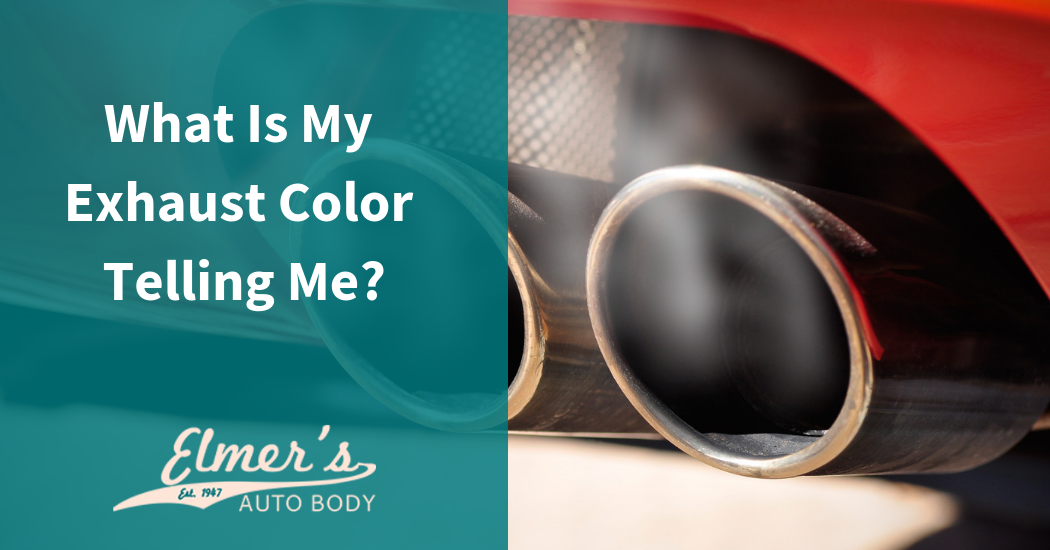We’ve all seen the stereotypical tropes in movies and on television, of thick black or white fumes belching from a car’s exhaust. In some cases, it indicates the vehicle’s a clunker, in other cases, indicating the engine running hard. The truth of the matter is, you actually can determine quite a bit from the color and consistency of your exhaust.
When you start your car on a cold morning, no matter what, you’re bound to see a thick, smoke-like plume due to temperature differential, and condensation from the heat. Aside from that, exhaust should be relatively hard to see.
If you’ve got very visible, distinctly-colored exhaust coming out of your vehicle, it could be a sign of serious problems. Fortunately, you can somewhat diagnose the type of problem based on the color and consistency itself. Today, we’re going to take a look at the five common exhaust colors, and what they mean for the condition of your vehicle. This is very important, so take this information to heart – it could save your vehicle, and possibly your life.
Brown Exhaust
The standard color of exhaust is a brownish tint, though thin and generally hard to see from much distance. As we said a moment ago, on a cold morning, it may come out much thicker, and with a hint of white or a deeper brown. This should diminish as the car heats up.
Blue Exhaust
If you’ve got distinctly blue exhaust coming out, then you’re burning oil, and that’s never a good sign. There could be a stem seal or piston ring failure, or a turbocharger lubrication failure. These would allow oil into the combustion chambers.
If you see blue smoke like this coming out of your exhaust, monitor your oil levels – they will deplete much faster if an internal leak is causing oil to burn. If this confirms oil depletion, then you should consult a mechanic right away, as the continuing loss of lubrication can damage moving parts, and can damage the engine as it continues to burn oil.
Black Exhaust
If you have deeply black exhaust, it means that you’re not getting sufficient air flow. Air/fuel ratios are very important, and very precisely balanced in all engines, and when the ratio is wrong, some of this fuel just doesn’t burn, and remains in the chamber, producing noxious black smoke. This could be the result of the air filter being blocked/bad, or the turbocharger failing. In some cases, pressure regulation failure could also be the culprit.
This isn’t as significant a hazard as blue or white smoke, but will severely ruin your fuel economy, and will eventually add to the degradation of your engine over time.
White Smoke
White smoke actually means the presence of water vapor, which means that water is mixing with your fuel. This is often the symptom of a bigger problem, such as a seal being broken, the fuel regulator needing calibrated, or worst case scenario, the engine block being cracked.
Grey Smoke
Grey smoke means that you’re burning oil, and you’ve got water mixing with your fuel, which means that you may have a whole host of the problems mentioned above, and you should consider the vehicle pretty much unsafe to drive until a mechanic has effectively dealt with it.
To learn more about your exhaust, and other signs of failure, fill out our contact form today.

